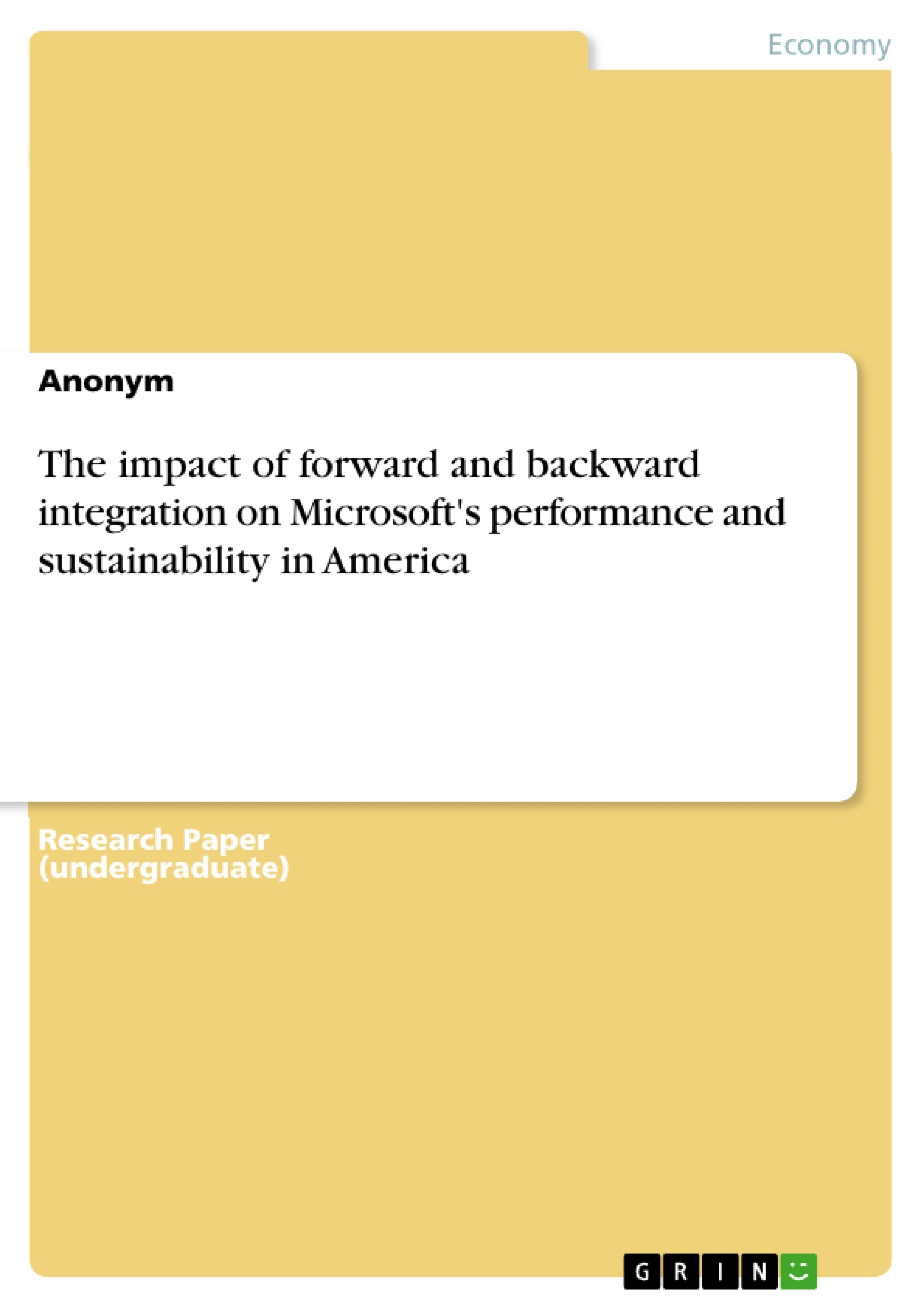This research aims to investigate the impact of forward and backward integration on Microsoft’s performance and sustainability in America. Vertical integration (VI) is a frequently used technique for resolving market imperfections and increasing firm performance. However, observational findings from previous research have yielded contradictory findings. Positive, negative, and nonsignificant covariation has been observed between VI and performance. A closer examination of the empirical findings shows that the relationship between VI and efficiency varies by industry and that various measures were used in the various studies.
This paper reviews the published research on the relationship between vertical integration on performance and sustainability. We account for the so-called "industry impact" by analyzing the strengths and weaknesses of various vertical integration steps in a single company context-Microsoft. This is accomplished by the use of a specialized data set that contains detailed details about performance measurements and vertical integration across a panel of firms. According to our results, the VI-performance correlation differs across measures and firms. The applicability of various approaches is critically assessed, and the managerial implications are addressed.
Table of Contents
- 1. Introduction
- 1.0 Background
- 1.1 Problem Statement
- 1.2 Aim and Objectives
- 1.3 Research Aim
- 2. Literature Review
- 2.0 Introduction
- 2.1 Vertical Integration and Organisational Performance
- 2.2 Vertical Integration and Sustainability
- 2.4 The Gains of Vertical Integration
- 2.5 The Disadvantages of Vertical Integration
- 3. Methodology
- 3.0 Introduction
- 3.1 Conceptual Framework/Philosophy
- 3.2 Strategy
- 3.3 Data Collection
- 3.4 Data Analysis
- 4. Findings
- 4.0 Introduction
- 4.1 Financial statements
- 4.2 Revenue Breakdown by different segments
- 5. Discussion
- 6. Conclusion
- 7. Implication
- References
Objectives and Key Themes
This dissertation explores the impact of forward and backward integration on Microsoft's performance and sustainability in America. The primary objective is to investigate how vertical integration influences the operating performance and sustainability of an organization in the contemporary business world. The dissertation focuses on the concept of vertical integration, encompassing both forward and backward integration strategies, and its effectiveness in overcoming market challenges while boosting organizational performance and competitiveness.- Impact of forward and backward integration on Microsoft's performance and sustainability
- Influence of vertical integration on operating performance and sustainability
- Vertical integration strategies as a tool for overcoming market challenges
- Boosting organizational performance and competitiveness through vertical integration
- Analysis of Microsoft's vertical integration strategies in the American market
Chapter Summaries
- Chapter 1: Introduction - This chapter provides background information on vertical integration, specifically forward and backward integration, and their potential impacts on business performance. It introduces Microsoft Corporation as a case study and highlights the company's increasing involvement in hardware as a strategy to enhance its software offerings. The chapter discusses the motivations behind Microsoft's vertical integration, including market control, diversification of revenue streams, and addressing the commoditization of software.
- Chapter 2: Literature Review - This chapter presents a critical review of existing research on the relationship between vertical integration and organizational performance and sustainability. It examines the advantages and disadvantages of vertical integration strategies, focusing on the potential gains in efficiency, cost reduction, and market control, as well as the associated risks and challenges.
- Chapter 3: Methodology - This chapter outlines the research methodology employed in the study. It details the conceptual framework and research strategy, including data collection methods and analysis techniques used to investigate the impact of vertical integration on Microsoft's performance and sustainability.
- Chapter 4: Findings - This chapter presents the empirical findings of the study, analyzing data related to Microsoft's financial statements and revenue breakdown by different segments. It examines how vertical integration has influenced the company's financial performance, inventory turnover, and market competitiveness.
- Chapter 5: Discussion - This chapter provides a comprehensive discussion of the research findings, interpreting their significance within the context of the literature review and theoretical framework. It explores the implications of the study's findings for Microsoft's future strategy and the broader business landscape.
Keywords
This dissertation examines the strategic implications of forward and backward integration on Microsoft's performance and sustainability. The focus is on vertical integration, organizational performance, sustainability, market imperfections, competitive advantage, inventory turnover, and the impact of integration strategies on the tech industry.- Quote paper
- Anonym (Author), 2023, The impact of forward and backward integration on Microsoft's performance and sustainability in America, Munich, GRIN Verlag, https://www.grin.com/document/1361771



